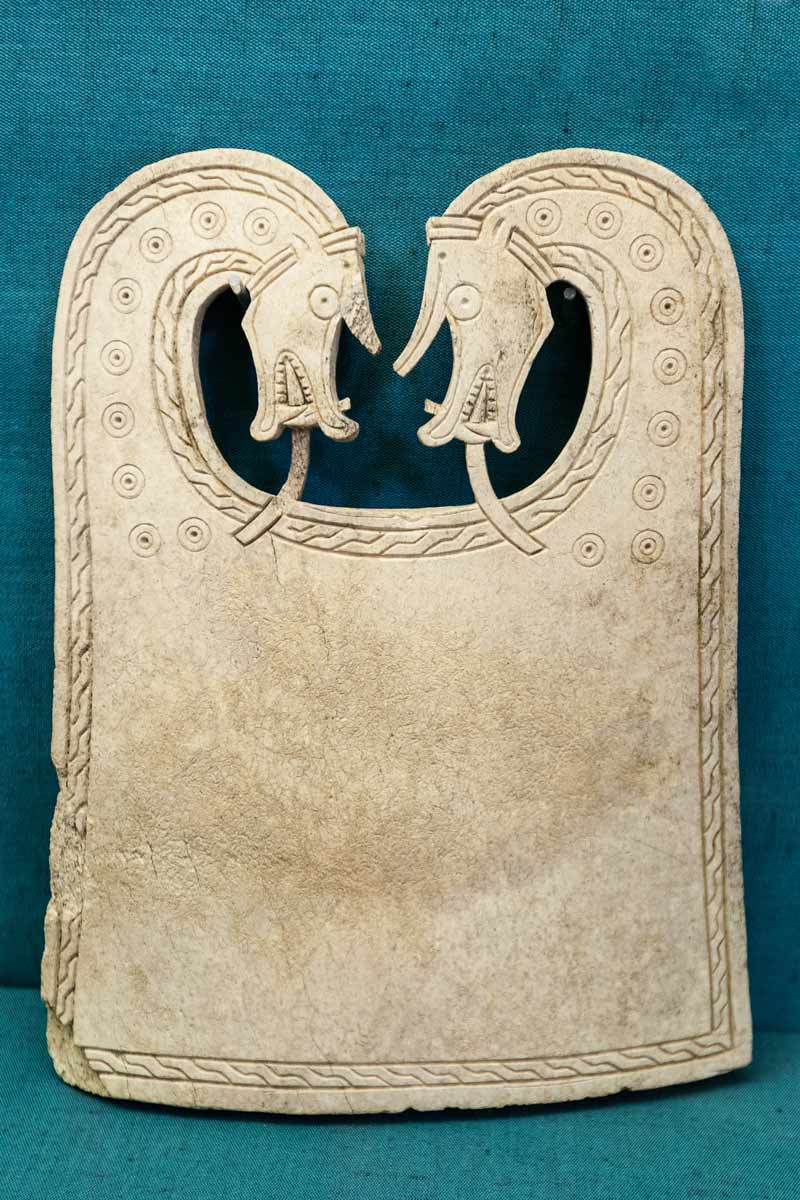Written by Alesha Taylor and Jana Velo
The July/August issue of Viking featured an image of an intriguing unnamed carving in the article “Tales from the Orkney Islands.” The ornate piece is not made of wood, but is a Viking whalebone plaque discovered in a late 9th- or early 10th-century burial in Scar, on the island of Sanday, Orkney. Crafted from a single piece of whalebone, this plaque portrays two dragons facing off in profile, a geometric outline offset by a series of encircled dots. Discovered within a 70-year-old Viking woman’s burial site, this relic was uncovered partially by erosion along the Scar farm’s coast and was revealed by excavation efforts in 1991. Today the plaque is displayed in the Orkney Museum in Kirkwall.

Michael Maggs, via Wikimedia Commons
Similar whalebone plaques have been found in other parts the world, yet their precise purpose remains uncertain. The objects have consistently been buried with the remains of Viking women, so one hypothesis suggests these were household items employed in a manner similar to ironing boards, utilized for smoothing creases and seams in linen attire. About the size of a piece of paper, the plaque’s use was aided by a smoothing tool featuring a rounded top and flat base. Another viewpoint posits that these plaques played a role in textile production. Alternatively, their ornate design and cutting marks on some of their surfaces could mean that they functioned as serving platters during lavish feasts attended by high-status individuals.
One of the whalebone plaques that appears especially weathered is preserved in the Walters Museum in Baltimore. This work was carved in 900 C.E. Other virtually identical plaques have been unearthed in Kvæfjord and Grytøy, in Troms og Finnmark County, Norway as well as in Ireland, Denmark and Birka in Sweden. While their function remains unclear, the uniformity in size and comparable decoration suggests that this was a commonly-used object. The fact that these plaques have been uncovered in the graves of wealthy women along with prized items such as brooches and textile-making tools points to them being a precious item. Crafting a durable substance into something not only useful but also beautiful points to the values of its owner. It wasn’t enough to make something practical out of a hard-won material; artistry and beauty were also important.
To read more about Nordic history in Orkney, read the July/August Viking article here.
